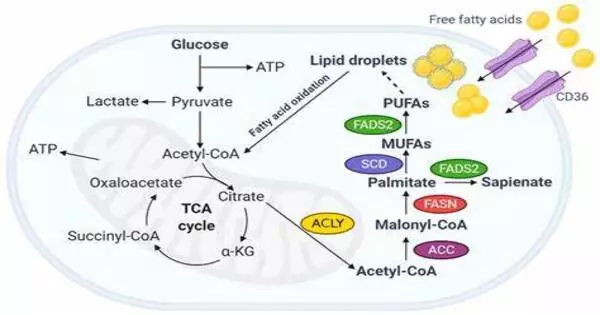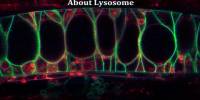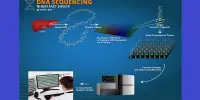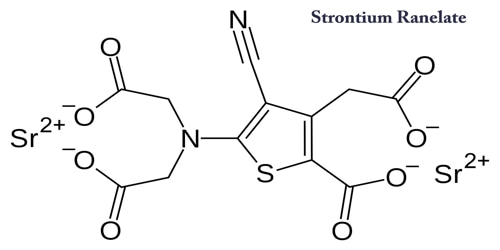The processes by which the body synthesizes, stores, and degrades fatty acids are referred to as fatty acid metabolism. It is made up of various metabolic processes that involve or are closely related to fatty acids, a family of molecules classified as lipid macronutrients. These processes can be divided into two categories: (1) catabolic processes that produce energy and (2) anabolic processes that serve as building blocks for other compounds.
Fatty acids are essential components of lipids, which act as energy storage molecules, cell membrane structural components, and signaling molecules. Catabolism is the breakdown of fatty acids to produce energy, primarily in the form of adenosine triphosphate (ATP). When completely oxidized to CO2 and water via beta-oxidation and the citric acid cycle, fatty acids yield the most ATP per gram when compared to other macronutrient classes (carbohydrates and protein). Fatty acids (primarily in the form of triglycerides) are thus the primary fuel storage form in most animals, and to a lesser extent in plants.
The major aspects of fatty acid metabolism include:
Fatty Acid Synthesis (Lipogenesis):
- Location: Primarily occurs in the liver and adipose tissue.
- Process: Acetyl-CoA, derived from carbohydrate metabolism, is converted into fatty acids through a series of enzymatic reactions, primarily in the cytoplasm. The key enzyme in this process is fatty acid synthase.
- Regulation: Insulin promotes lipogenesis, while glucagon and other hormones inhibit it.
Fatty Acid Storage:
- Excess fatty acids synthesized or ingested can be stored in adipose tissue as triglycerides, which consist of glycerol and three fatty acids.
- Adipose tissue serves as the primary site for long-term energy storage.
Fatty Acid Mobilization (Lipolysis):
- In times of energy demand, stored triglycerides are broken down into glycerol and fatty acids through lipolysis.
- Hormones like adrenaline and cortisol stimulate lipolysis.
Beta-Oxidation:
- Location: Takes place in the mitochondria.
- Process: Fatty acids are broken down into acetyl-CoA through a series of reactions known as beta-oxidation. This process generates NADH and FADH2, which contribute to the electron transport chain in oxidative phosphorylation.
- Energy Production: Acetyl-CoA enters the citric acid cycle to produce energy.
Fatty Acid Regulation:
- Enzymes involved in fatty acid metabolism are regulated by hormonal signals such as insulin, glucagon, and leptin.
- Malonyl-CoA, an intermediate in fatty acid synthesis, inhibits carnitine palmitoyltransferase I (CPT-I), a key enzyme in fatty acid oxidation, thus regulating the balance between fatty acid synthesis and oxidation.
Triglycerides, phospholipids, second messengers, hormones, and ketone bodies are all formed from intact fatty acids during anabolism. For example, phospholipids form the phospholipid bilayers from which all of the cell’s membranes are made of fatty acids. Phospholipids are the components of the plasma membrane and other membranes that enclose all organelles within cells, including the nucleus, mitochondria, endoplasmic reticulum, and Golgi apparatus. Fatty acids are modified in another type of anabolism to form other compounds such as second messengers and local hormones. The most well-known of these local hormones are the prostaglandins derived from arachidonic acid stored in the cell membrane.
















